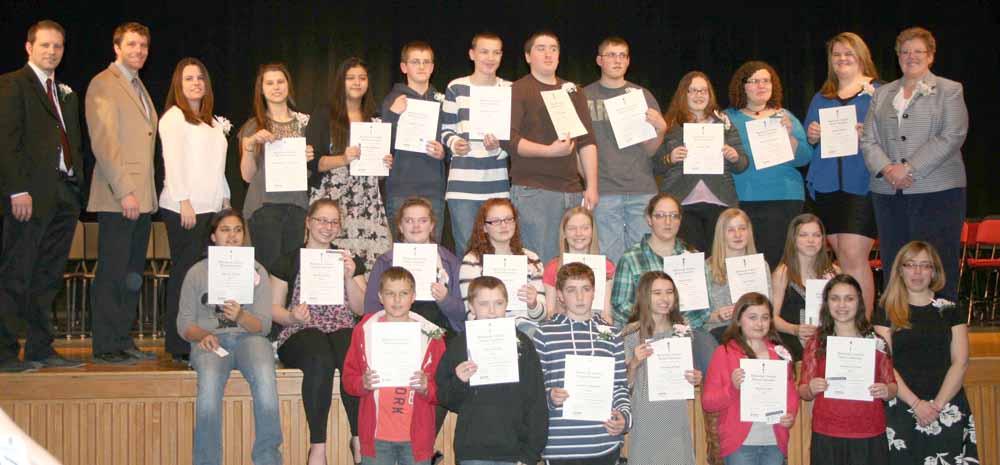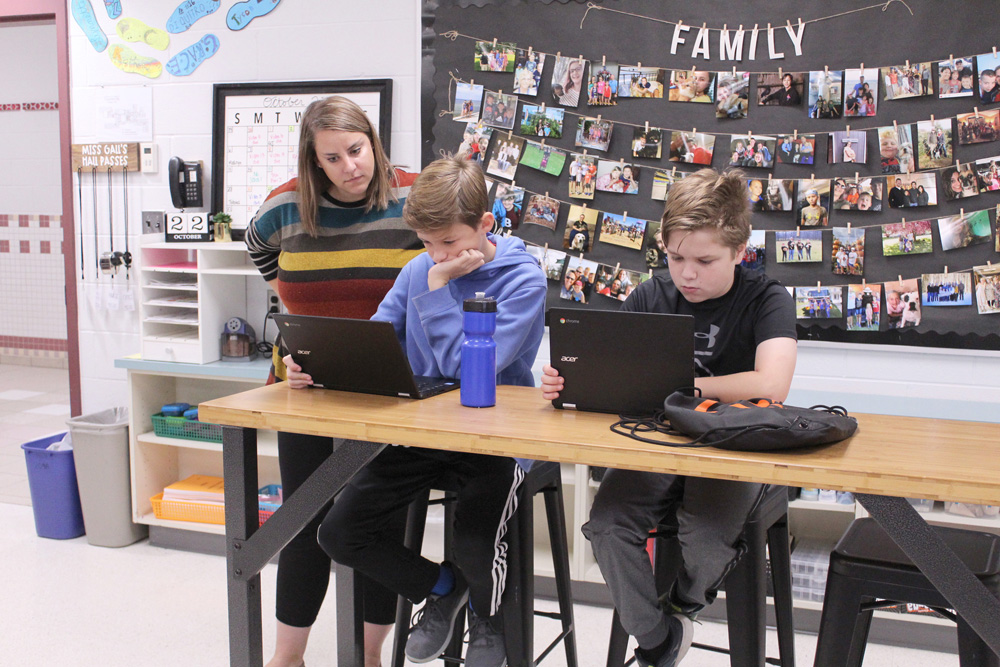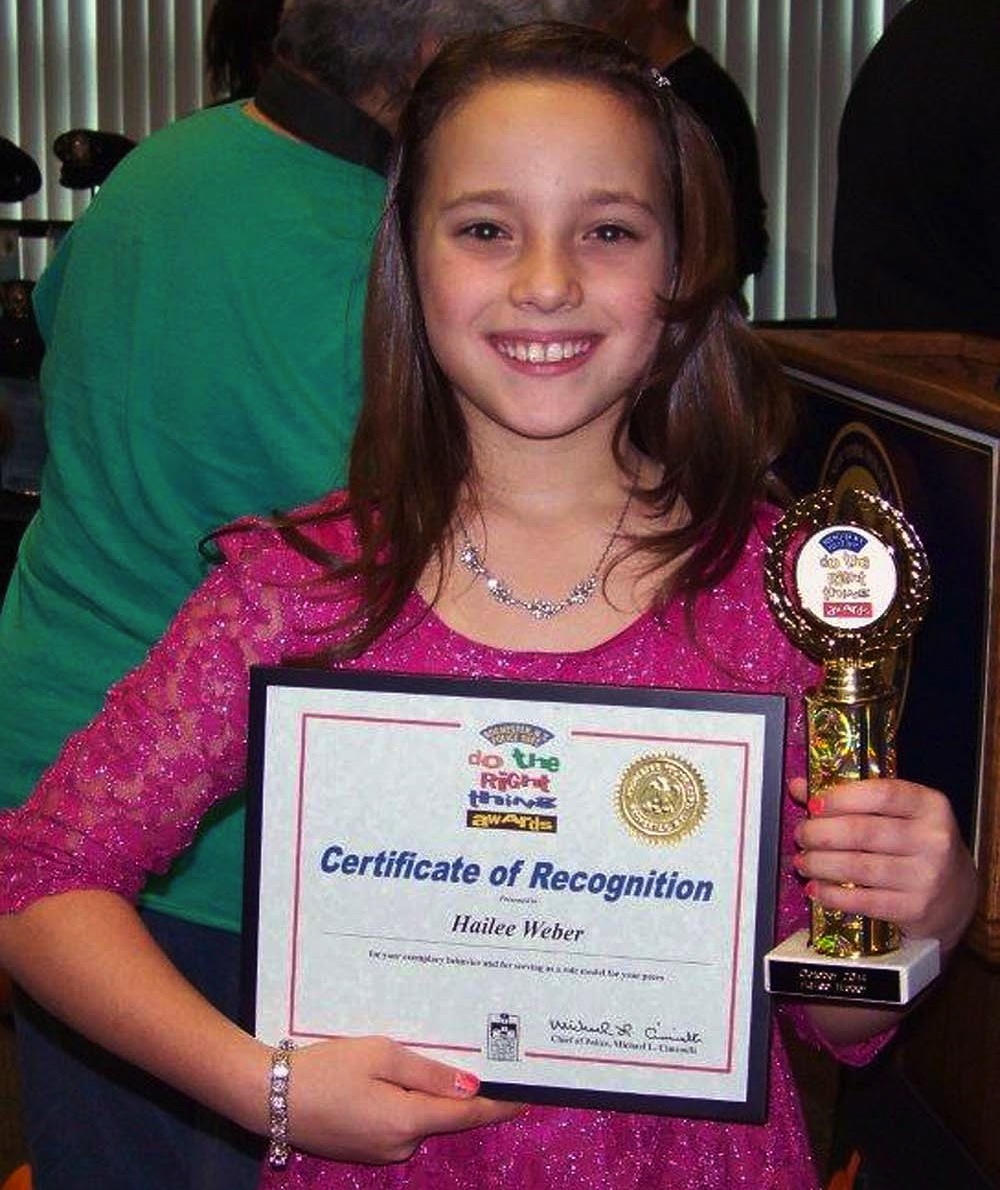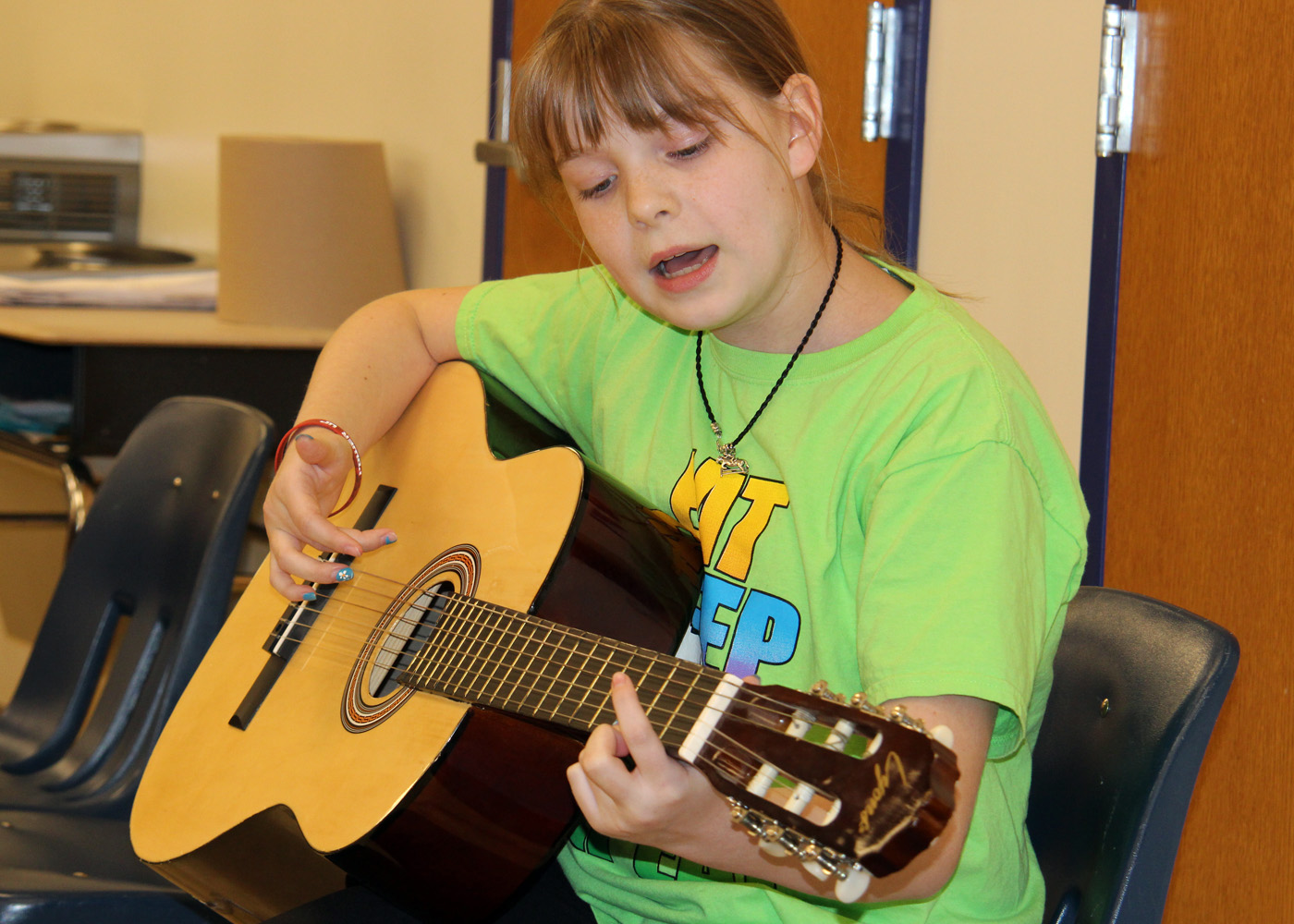Hill School offers unique program for the academically talented
Meeting the needs of students who have passion to discover
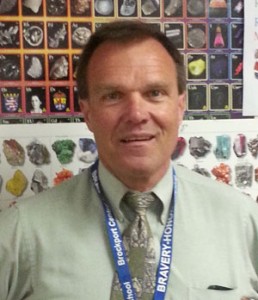
The last image on the Power Point was Osama bin Laden. The presenters who had researched terrorism asked the question, “Is this the most dangerous man in the world?”
That presentation was on May 14, 1999 — two years, three months, and 28 days before the 9/11 tragedy in New York City, planned and instigated by bin Laden.
The two researchers were not scholars in a think tank. They were two fifth grade students, Branden Hickey and Greg Strabel, in Brockport Hill School’s Academically Talented Program (ATP). The two were curious and concerned about terrorism in the world and wanted to study it. They approached teacher Buck Noble who located three mentors to guide them: LTC Steven Hoffpauer in military science, Dr. Ray Duncan in political science, both at The College at Brockport, and an expert on counter terrorism in Washington whom they interviewed by email.
ATP projects usually conclude with some demonstration to an audience. For these two students the power point was presented to two honor global history classes at Brockport High School. The two captivated their bright older audience with their research.
The Academically Talented Program: What’s offered and expected
The terrorism project is one example of what Buck Noble has been doing with fourth and fifth grade students for the last 18 years as “enrichment specialist” in the Academically Talented Program (ATP) in Hill School. He encourages and enables curious young minds with a passion to know more about something in their world. He locates appropriate expert mentor volunteers, carefully screened, to guide them in their quest.
Noble gives a presentation to all entering fourth grade classes, introducing them to existing group projects they can join: rocks and minerals, engineering, math labs, and robotics. Then, he encourages students to propose their own project of interest. Other projects initiated by students, individually or in groups, include: blue bird houses, spiders, Veggie Nation, music, dance, chess, hospitality industry, woodwork, and frogs.
There are no formal academic prerequisites to join the ATP. The students must be doing well in their classes, be able to afford time out of class, and be responsible to make up work missed in class.
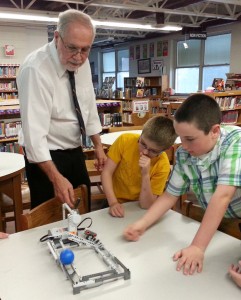
Mining for mentors
One of Noble’s tasks is to locate appropriate mentors for the students’ projects. He uses all sorts of networking, social media, and sometimes, ads. Once mentors are assigned, he works out the logistics of where and when to meet.
The mentors are well-qualified. They are often professionals in the field of interest, including professors at The College at Brockport, or well-accomplished practitioners. The 20 students in dance meet with a dance class in Hartwell Hall where the college dance students are their mentors. Noble himself mentors a group of 50 chess players every Monday from 7:30 to 9 a.m.
Frank Rakoski is the founding mentor with whom Noble started the ATP program. Located through an ad 18 years ago, Rakoski, an electrical engineer, was about to retire after 30 years as a systems analyst with Kodak. He has since been a mentor in the robotics lab and the chess club. He lives locally with his wife, Karen Rakoski, a mechanical engineer, who has mentored ATP students since 2006 in rocks and minerals and lapidary art. Noble has nominated the Rakoskis for recognition from the National Association for Gifted Children, for the quality of their work totaling 12,500 hours to date.
The demise of “gifted” and “talented”
Noble says that “Academically Talented” is a misnomer, but it’s a convenient title for the program. He says the terms “gifted” and “talented” have become emotionally and politically loaded for parents, teachers and administrators. About 20 years ago a more formal gifted and talented program in the district was scrapped in the controversy. Still seeing a need for many students not appropriately challenged by the traditional curriculum, in 1997 BCSD administrators sent three teachers (including Noble as the new program leader) and two administrators to a two-week workshop at the University of Connecticut, the clearing house for all gifted and talented research, Noble said. “My conceptions about gifted and talented, and how to work with these kids, were blown out of the water!” Noble said. “I had a huge paradigm shift in my own mind about what this population of students is all about.”
Passion is primary, backed by skills
embedded in the learning standards
“Research shows there is no standardized test for measuring giftedness for the K-6 population,” Noble said. It is a student’s passion for a particular area of learning or skill that drives him/her to high achievement on that subject. Noble reminds his students that it is a healthy respect for the brain that is behind their gratifying learning adventure. That reminder is summed up in a kind of humorous secret code he often uses when greeting students: “How’s your brain?”
The ATP is pragmatic as well as passionate. Once a student has set his/her goal with a mentor and methods for getting there, then New York State standards are used for the learning skill sets that will be focused on. “It’s called ‘backwards by design’, an educational methodology at the top of every educator’s list,” Noble said.
“There is something magic.
They give it back to me.”
Noble’s passion for his work suggests he has found his very gratifying professional goal.
“My personal goal for these students is that they are able to function comfortably in the arena of novelty,” Noble said, “because that is what they are going to be confronted with in the constantly changing real world.” With a futurist perspective, Noble sees the students’ journey of discovery in ATP as primary over the content learned in their projects. “The job for them will be to face the challenge in totally unique situations, when asked to solve problems,” Noble said. “My job is to give them challenging situations now and be the guide on the sideline, staying out of their way.”
Noble met his own totally unique situation in life when he became a teacher. He trained in nuclear engineering with the Navy and became a hydraulics engineer on the last conventional aircraft carrier U.S.S. John F. Kennedy. Leaving the Navy, he earned three degrees in two years: Associate in International Studies, B.A. in
Global Studies, and a B.A. in Spanish.
With no particular career plans, in 1983 a teacher convinced him to try teaching. “I backed into teaching at Brockport,” Noble said. “I never thought I would ever be a teacher in my life.” He has loved it ever since. Asked about the high level of energy he demonstrates, Noble said, “It comes from the kids. There is just something magic; I can’t put it another way. They give it back to me.”


